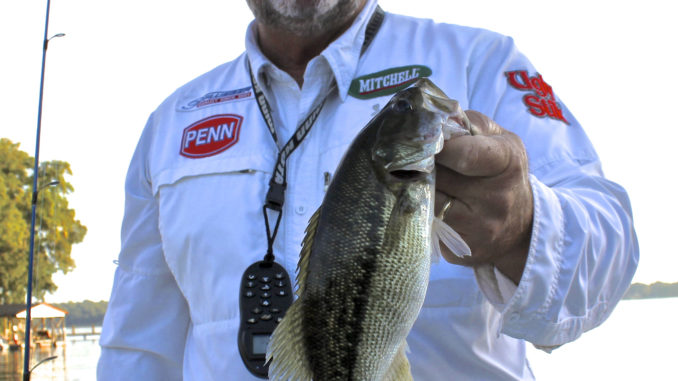
The introduction of spotted bass and hybrid bass has revitalized Lake Norman’s once-dormant summer fishery.
Ask any angler what he or she wants more of and the answer will be simple and emphatic, “to catch more fish!” Spanning 32,500 acres just north of Charlotte, the inland sea known as Lake Norman gives fisherman the opportunity to do just that.
But it hasn’t always been that way. Only a few years ago, there were no large schools of spotted bass roaming the open waters, nor a burgeoning hybrid bass fishery that is putting smiles on faces and exceeding expectations. When those fisheries exploded, guide Craig Price of Fish On! Guide Service was on the spot to target them and take advantage of them.
“Spotted bass behave more like smaller striped bass than largemouths,” said Price. “They’re an open-water species that roam in packs, hunting schools of small baitfish. The average size of a spot on Norman is between 1 1/2 and 2 pounds, but on a good day you might catch a 100 of them.
“The hybrid bass fishery is brand new. I just started catching them in numbers last July in the same areas I’m catching spots. The stocked hybrids are running between 2 ½ and 3 ½ pounds, 16 to 20 inches, but these are only 2-year-olds.”
When Norman’s striped bass fishery collapsed after a series of hot-weather fish kills, the N.C. Wildlife Resources Commission made the call to discontinue stocking them and replace them with hybrid bass, which are less susceptible to the problems caused by the poorly oxygenated water that is common during the summer.
“Hybrid bass have a touch lower oxygen demand than striped bass,” said Corey Oakley, a fisheries biologist for the Commission. “But the big difference is, they can withstand warmer water temperatures. They don’t have to be down in the coldest part of the lake where the oxygen level is the lowest.”
According to Oakley, hybrid bass, a hatchery cross between a white bass and striped bass, also have a more diverse palate than striped bass, which is advantageous on a low-nutrient value lake that doesn’t support a large baitfish population, a description that fits Norman to a “T.”
“Norman is the fifth lake on the Catawba River chain,” Oakley said. “The nutrients are filtered out from lake to lake, and by the time the water gets to Norman, it’s gin clear. When you can go to a lake and see 10 feet down, it means there’s a low nutrient load.
“Hybrid bass have white bass genes as well as stripers’; they don’t just feed on shad,” said Oakley, who believes the diversity will help them put on weight when other species struggle. “They’ll eat worms from the bottom, bugs and mussels as well.”
Price approaches spots and hybrids in a manner similar to striped bass, trolling live baits, artificials or a mixture of the two.
“It occurred to me that while I was riding around, scouting, I should put out some baits, and I was surprised at how many fish I caught trolling artificial lures,” said Price, who detailed how he targets hybrids and spotted bass to a visitor on one fishing trip last year.
“A lot of times I will follow the 10-foot to 20-foot contour line around a hump or point,” Price said as he rounded a point near an area where a series of creeks dumped into the main river channel.
After nabbing a nice handful of spotted bass, Price noticed a flurry of surface disturbances that made it difficult for him to concentrate on his course.
“We need to get the topwater baits out,” he said as reached for a rod pre-rigged with a clear Spook Junior for just such an occasion.
As quick as topwater plugs could be cast in the general direction of the activity, the water began to light up like a mine field of tiny explosions as a school of something pinned a pod of tiny baitfish between themselves and the water’s surface.
Price twitched his bait from side to side attempting to draw attention to his offering. A fish soon picked up the trail and made several hits and misses before connecting with the steel and Price sealed the deal with a firm hookset.
After a spunky fight, a 3 ½-pound hybrid bass was quickly scooped into the net and brought aboard for inspection. Price studied the fish and approved of its health and sporting abilities before releasing it back to its buffet.
Although spots and hybrids associate with depth changes, their consistent mobility makes them both an ideal trolling target.
“I’ll do more casting if I have two people or fewer on the boat, otherwise, I’m trolling,” said Price. “I want to fish multiple rods, so I came up with a system that is a combination of shallow water stickbaits, crankbaits that dive from 7 to 15 feet, and small spinnerbaits or lipless crankbaits. It’s really a search technique, but it catches a lot of fish.”
The trick to keep the trolling spread from turning into an unholy mess is that there is a place for everything and everything in its place.
“I run a shallow-water Rapala stickbait off each corner of the stern in the flat-line position,” said Price, who maintains these 2- to 3-foot divers about 100 feet behind the boat.
In his next set of rod holders away from the stern, he pays out 75 feet of line tied to deeper-diving crankbaits.
“I like the little Bandit crankbaits, the 350 series,” he said. “It runs from 10 to 13 feet at 1 ½ miles an hour. It has a really tight wobble, and it’s not real big.”
The next rods on either side of the boat are trolling small tail-spinners.
“I let out about 20 to 30 feet of line for the spinners,” said Price, “just enough to get it behind the boat and run in the 10-foot range. It may not look like much, but the spots love it.”
Each lure patrols its specific slice of the water column until the boat stops to land a fish or cast at fish feeding at the surface. The crankbaits will float to the surface, and the spinners flutter down to just above the bottom.
“I get a lot of strikes when the spinners are dropping or when I start back up,” said Price.
“In the fourth positions I’ll put minnows on a 2-ounce trolling weight with a section of leader,” said Price, who uses these as opposed to herring or shad because they survive trolling speeds better. “I don’t know how much swimming they’re doing, I’m really just dragging them along, but they get a lot of bites.”
The vastness of Lake Norman is a bit daunting when attempting to pinpoint a likely fishing spot, however, Price believes a good topographic map will help whittle down the choices.
“In the summer, these fish will be suspended out near the river channel, and they will always relate to some kind of topographic structure,” he said. “The channel itself, a bend in the channel, a point, hump or shoal are all good places. There are a lot of humps and shoals on Norman in the mouths of deep creeks and near the river channel where its only a couple of feet deep, but surrounded by water from 70 to 90 feet deep.”
Using these underwater anomalies to their advantage, hybrids and spots corral large schools of small shad, alewives and blueback herring.
“The bait they’re chasing is so small that sometimes you cant even see it on sonar, it’s less than a half inch, 1 to 4 inches is the max,” said Price. “The shad and herring will hatch multiple times during the year, and while that happens closer to shore, those big schools will move out to deeper water.”
The “new” Lake Norman may be absent of a healthy striped bass population, but the hybrid replacements will be better suited to the environment and more likely to maintain a healthy weight, perhaps one day in the 8- to 10-pound class. Spotted bass numbers are high and showing signs of leveling off or decreasing slightly, which should produce a larger class of fish. All in all, Norman shows the promise of a growing fishery.
DESTINATION INFORMATION
HOW TO GET THERE — Less than 20 miles north of Charlotte, Lake Norman is sandwiched between I-40 running east to west along the northern end and I-85 running east to west to the south. I-77 runs north to south parallel to the eastern shore. NC 150 crosses at mid-lake and offers great access. To locate public boat ramps, visit www.ncpaws.org/wrcmapbook/baa.aspx.
WHEN TO GO — Spotted bass and hybrid bass are active year-round on Lake Norman. Early summer will find both species closer to coves and inside the mouth of deep creeks, pushing out to more open water as July progresses. Cooler weather will bring fish closer to shore and get them chasing bait, which brings on great topwater fishing.
BEST TECHNIQUES — Trolling is a great way to catch both hybrid and spotted bass. Drag crankbaits anywhere from 10 to 100 feet behind the boat on 20-pound braid. Also, drag a few live baits off the bow on Carolina rigs. Speed should be from 1/2 to 1 mph. Crankbaits in shad patterns and fire tiger are usually productive. For topwater, go to smaller baits like Spoon Juniors and Pop-Rs fished on 20-pound braid to eliminate stretch. Use medium-light spinning and baitcasting tackle.
FISHING INFO/GUIDES — Craig Price, Fish On! Guide Service, 704-996-0946, www.fishonlakenorman.com; Lake Norman Bait and Tackle, 704-658-1113, www.lakenormantackle.com; See also Guides and Charters in Classifieds.
ACCOMMODATIONS — Clarion Inn, Cornelius, 704-896-0660; Holiday Inn Express and Suites, Huntersville, 704-892-9487; Sleep Inn and Suites, Huntersville, 704-766-2500.
MAPS — Fishing Hot Spots, 800-ALL-MAPS, www.fishinghotspots.com; Kingfisher Maps, www.kfmaps.com.

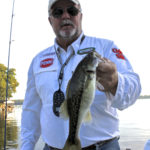
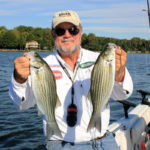
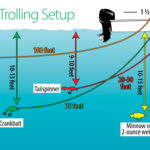

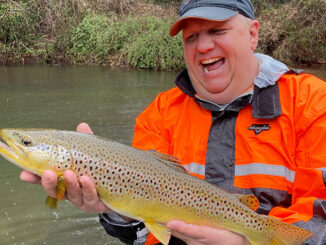


Be the first to comment